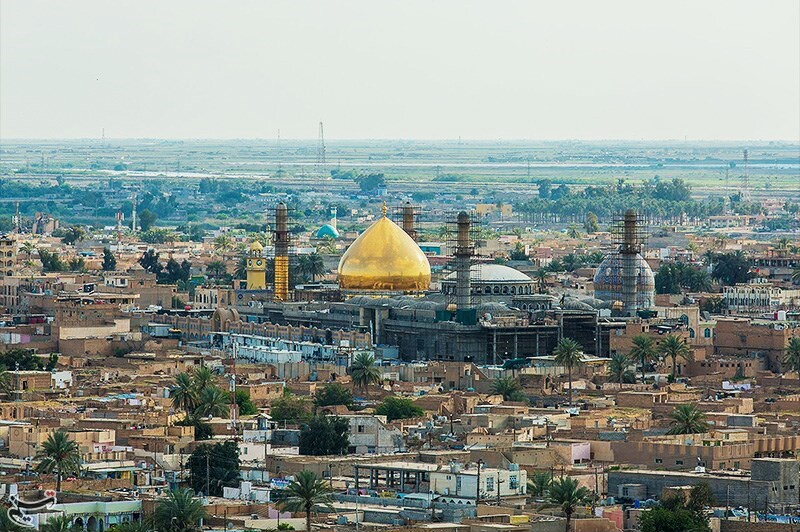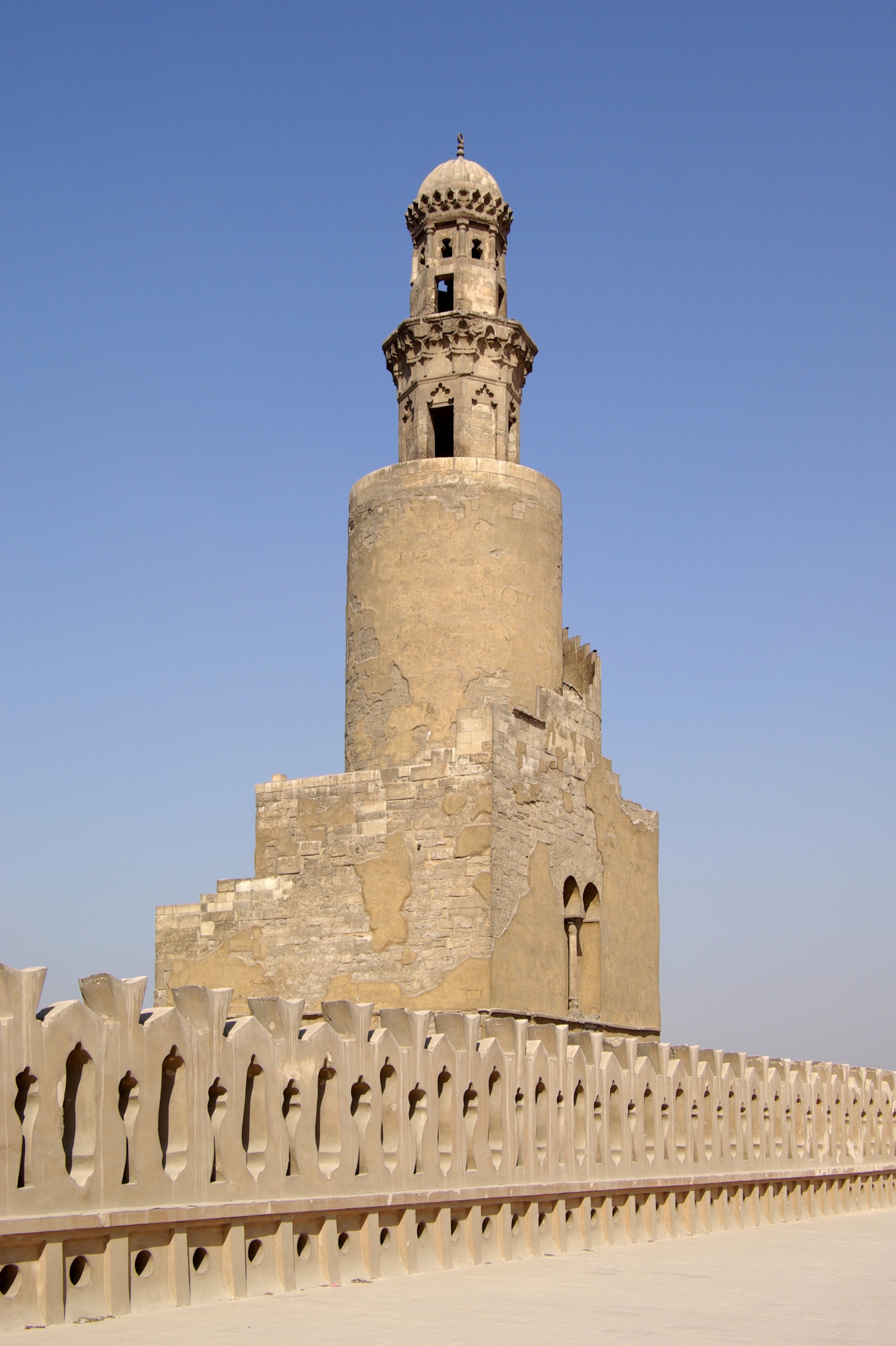|
Al-Muʿtamid
Abu’l-ʿAbbās Aḥmad ibn Jaʿfar ibn Muḥammad ibn Hārūn al-Muʿtamid ʿalā’Llāh (; – 14 October 892), better known by his regnal name al-Muʿtamid ʿalā 'llāh (, 'Dependent on God'), was the caliph of the Abbasid Caliphate from 870 to 892. His reign marks the end of the "Anarchy at Samarra" and the start of the Abbasid restoration, but he was largely a ruler in name only. Power was held by his brother al-Muwaffaq, who held the loyalty of the military. Al-Mu'tamid's authority was circumscribed further after a failed attempt to flee to the domains controlled by Ahmad ibn Tulun in late 882, and he was placed under house arrest by his brother. In 891, when al-Muwaffaq died, loyalists attempted to restore power to the Caliph, but were quickly overcome by al-Muwaffaq's son al-Mu'tadid, who assumed his father's powers. When al-Mu'tamid died in 892, al-Mu'tadid succeeded him as caliph. Life The future al-Mu'tamid was a son of Caliph al-Mutawakkil () and a Kufan slave ... [...More Info...] [...Related Items...] OR: [Wikipedia] [Google] [Baidu] |
List Of Caliphs
A caliph is the religious and political leader of an Islamic state known as the caliphate. Caliphs (also known as 'Khalifas') led the Muslim as political successors to the Islamic prophet Muhammad, and widely recognised caliphates have existed in various forms for most of Islamic History, Islamic history. The first caliphate, the Rashidun Caliphate, was ruled by the four Rashidun, Rashidun caliphs (, ), Abu Bakr, Umar, Uthman and Ali, who are considered by Sunni muslims, Sunni Muslims to have been the most virtuous and pure caliphs. They were chosen by popular acclamation or by a small committee, in contrast with the following caliphates, which were mostly hereditary. On the other hand, Shiites only recognise Ali and consider the first three caliphs to be usurpers. The Rashidun caliphate ended with the First Fitna, which transferred authority to the Umayyad dynasty that presided over the Umayyad Caliphate, the largest caliphate and the last one to actively rule the entire Muslim ... [...More Info...] [...Related Items...] OR: [Wikipedia] [Google] [Baidu] |
Samarra
Samarra (, ') is a city in Iraq. It stands on the east bank of the Tigris in the Saladin Governorate, north of Baghdad. The modern city of Samarra was founded in 836 by the Abbasid caliph al-Mu'tasim as a new administrative capital and military base. In 2003 the city had an estimated population of 348,700. During the Iraqi Civil War (2006–08), Samarra was in the " Sunni Triangle" of resistance. The archeological site of Samarra still retains much of the historic city's original plan, architecture and artistic relics. In 2007, UNESCO designated it a World Heritage Site. History Prehistoric Samarra The remains of prehistoric Samarra were first excavated between 1911 and 1914 by the German archaeologist Ernst Herzfeld. Samarra became the type site for the Samarra culture. Since 1946, the notebooks, letters, unpublished excavation reports and photographs have been in the Freer Gallery of Art in Washington, D.C. The civilization flourished alongside the Ubaid per ... [...More Info...] [...Related Items...] OR: [Wikipedia] [Google] [Baidu] |
Turkic Peoples
Turkic peoples are a collection of diverse ethnic groups of West Asia, West, Central Asia, Central, East Asia, East, and North Asia as well as parts of Europe, who speak Turkic languages.. "Turkic peoples, any of various peoples whose members speak languages belonging to the Turkic subfamily...". "The Turkic peoples represent a diverse collection of ethnic groups defined by the Turkic languages." According to historians and linguists, the Proto-Turkic language originated in Central-East Asia, potentially in the Altai-Sayan region, Mongolia or Tuva.: "The ultimate Proto-Turkic homeland may have been located in a more compact area, most likely in Eastern Mongolia": "The best candidate for the Turkic Urheimat would then be northern and western Mongolia and Tuva, where all these haplogroups could have intermingled, rather than eastern and southern Mongolia..." Initially, Proto-Turkic speakers were potentially both hunter-gatherers and farmers; they later became nomadic Pastoralism, ... [...More Info...] [...Related Items...] OR: [Wikipedia] [Google] [Baidu] |
Patronymic
A patronymic, or patronym, is a component of a personal name based on the given name of one's father, grandfather (more specifically an avonymic), or an earlier male ancestor. It is the male equivalent of a matronymic. Patronymics are used, by custom or official policy, in many countries worldwide, although elsewhere their use has been replaced by or transformed into patronymic surnames. Examples of such transformations include common English surnames such as Johnson (surname), Johnson (son of John). Origins of terms The usual noun and adjective in English is ''patronymic'', but as a noun this exists in free variation alongside ''patronym''. The first part of the word ''patronym'' comes from Greek language, Greek πατήρ ''patēr'' 'father' (Genitive case, GEN πατρός ''patros'' whence the combining form πατρο- ''patro''-); the second part comes from Greek ὄνυμα ''onyma'', a variant form of ὄνομα ''onoma'' 'name'. In the form ''patronymic'', this stand ... [...More Info...] [...Related Items...] OR: [Wikipedia] [Google] [Baidu] |
Kufa
Kufa ( ), also spelled Kufah, is a city in Iraq, about south of Baghdad, and northeast of Najaf. It is located on the banks of the Euphrates, Euphrates River. The estimated population in 2003 was 110,000. Along with Samarra, Karbala, Kadhimiya and Najaf, Kufa is one of five Iraqi cities that are of great importance to Shia Islam, Shi'ite Muslims. The city was founded in 638 Common Era, CE (17 Hijra (Islam), Hijrah) during the reign of the second Rashidun Caliph, Umar ibn Al-Khattab, and it was the final capital of the last Rashidun Caliphate, Rashidun Caliph, Ali ibn Abi Talib. Kufa was also the founding capital of the Abbasid Caliphate. During the Islamic Golden Age it was home to the grammarians of Kufa. Kufic, Kufic script is named for the city. The Palestinian keffiyeh, also known as kufiya and worn by Arab men, was Cultural appropriation, appropriated from Kufa, and is worn today to convey Cultural diversity, diverse political sentiments. Due to heightened global consumer ... [...More Info...] [...Related Items...] OR: [Wikipedia] [Google] [Baidu] |
Abbasids Ninth Century
The Abbasid Caliphate or Abbasid Empire (; ) was the third caliphate to succeed the prophets and messengers in Islam, Islamic prophet Muhammad. It was founded by a dynasty descended from Muhammad's uncle, Abbas ibn Abd al-Muttalib (566–653 Common Era, CE), from whom the Abbasid dynasty, dynasty takes its name. After overthrowing the Umayyad Caliphate in the Abbasid Revolution of 750 CE (132 anno Hegirae, AH), they ruled as caliphs based in modern-day Iraq, with Baghdad being their capital for most of their history. The Abbasid Revolution had its origins and first successes in the easterly region of Greater Khorasan, Khurasan, far from the Levantine center of Umayyad influence. The Abbasid Caliphate first centered its government in Kufa, modern-day Iraq, but in 762 the caliph al-Mansur founded the city of Baghdad as the new capital. Baghdad became the center of Science in the medieval Islamic world, science, Islamic culture, culture, Abbasid art, arts, and List of invent ... [...More Info...] [...Related Items...] OR: [Wikipedia] [Google] [Baidu] |
Ahmad Ibn Tulun
Ahmad ibn Tulun (; c. 20 September 835 – 10 May 884) was the founder of the Tulunid dynasty that ruled Egypt in the Middle Ages, Egypt and Bilad al-Sham, Syria between 868 and 905. Originally a Turkic peoples, Turkic slave-soldier, in 868 Ibn Tulun was sent to Egypt as governor by the Abbasid caliph. Within four years he had established himself as a virtually independent ruler by evicting the caliphal fiscal agent, Abu'l-Hasan Ahmad ibn Muhammad ibn Abdallah ibn al-Mudabbir, Ibn al-Mudabbir, taking over control of Egypt's finances, and establishing a large military force personally loyal to himself. This process was facilitated by the volatile political situation in the Abbasid court and the preoccupation of the Abbasid regent, al-Muwaffaq, with the wars against the Persian Saffarids and the Zanj Rebellion. Ibn Tulun also established an efficient administration in Egypt. After reforms to the tax system, repairs to the irrigation system, and other measures, the annual tax yield g ... [...More Info...] [...Related Items...] OR: [Wikipedia] [Google] [Baidu] |
Anarchy At Samarra
The Anarchy at Samarra () was a period of extreme internal instability from 861 to 870 in the history of the Abbasid Caliphate, marked by the violent succession of four caliphs, who became Puppet ruler, puppets in the hands of powerful rival military groups. The term derives from the then capital and seat of the caliphal court, Abbasid Samarra, Samarra. The "anarchy" began in 861, with the murder of Caliph al-Mutawakkil by his Turkish guards. His successor, al-Muntasir, ruled for six months before his death, possibly poisoned by the Turkish military chiefs. He was succeeded by al-Musta'in. Divisions within the Turkish army leadership enabled Musta'in to flee to Baghdad in 865 with the support of some Turkish chiefs (Bugha the Younger and Wasif al-Turki, Wasif) and the Shurta, Police chief and governor of Baghdad Muhammad ibn Abdallah ibn Tahir, Muhammad, but the rest of the Turkish army chose a new caliph in the person of al-Mu'tazz and Abbasid civil war (865–866), besieged Baghd ... [...More Info...] [...Related Items...] OR: [Wikipedia] [Google] [Baidu] |
Caliph
A caliphate ( ) is an institution or public office under the leadership of an Islamic steward with Khalifa, the title of caliph (; , ), a person considered a political–religious successor to the Islamic prophet Muhammad and a leader of the entire Muslim world (''ummah''). Historically, the caliphates were polities based on Islam which developed into multi-ethnic trans-national empires. During the medieval period, three major caliphates succeeded each other: the Rashidun Caliphate (632–661), the Umayyad Caliphate (661–750), and the Abbasid Caliphate (750–1517). In the fourth major caliphate, the Ottoman Caliphate, the rulers of the Ottoman Empire claimed caliphal authority from 1517 until the Ottoman caliphate was Abolition of the Caliphate, formally abolished as part of the Atatürk's reforms, 1924 secularisation of Turkey. An attempt to preserve the title was tried, with the Sharifian Caliphate, but this caliphate fell quickly after its conquest by the Sultanate o ... [...More Info...] [...Related Items...] OR: [Wikipedia] [Google] [Baidu] |




